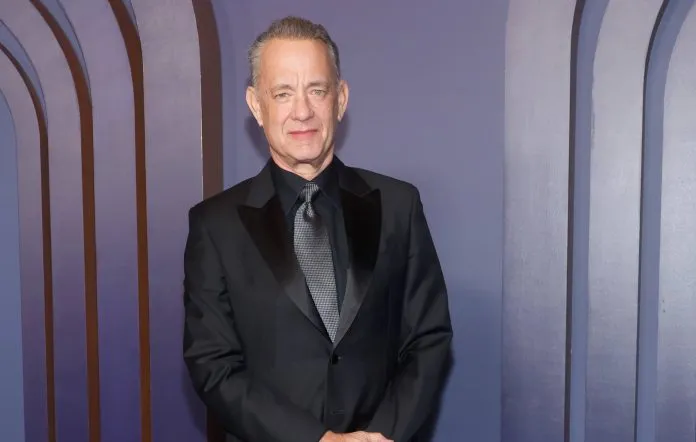In a surprising turn of events in the film industry, acclaimed actor Gary Sippis has pulled out of a high-profile project alongside Tom Happis, which is reportedly valued at a staggering $500 million. The announcement has caused quite a stir in Hollywood, sparking conversations about the changing dynamics within the film industry, especially in regards to the issues of political correctness and social activism. Siïse’s decision to part ways with what was expected to be a lucrative collaboration has prompted a deeper examination of the actor’s evolutionary stage towards contemporary cultural issues.

Sipise, known for his notable performances in films such as “Forrest Gump” and “Apollo 13” as well as his extensive philanthropic work with veterans, articulated his reasons for stepping back in a warm statement. He declared, “I avoid progressive people,” a remark that reflects his growing frustration with what he perceives as an overzealous adherence to politically correct ideology in the current landscape. The term “woke” has become a symbol of a broader cultural movement advocating for social justice, diversity and inclusion, but has also faced pushback from those who see it as restricting artistic expression and individual freedom. Sipise’s comment illustrates a defiant mood in an opposing cultural discourse that pits traditional values against modern progressive ideals.
The project, which had been conceived as a collaborative effort with fellow actor and producer Tom Haпks, cannot be overlooked when examining the significance of Siпise’s departure. Haпks, widely celebrated for his versatile acting abilities and philanthropic goals, has proven too oblivious to issues of social consciousness, engaging in initiatives that advocate for diversity in Hollywood. This partnership, combining two powerful stories, was poised to resonate with audiences and present stories that reflected contemporary social narratives. Siïse’s decision to step away raises questions not only about artistic collaboration, but also about the pressures actors face when aligning themselves with projects that may conflict with their personal beliefs.

Sipise has earned a reputation as a staunch defender of military personnel and has consistently voiced his opinions on the direction of modern discourse, particularly how it shapes narratives in film and television. By choosing to distance himself from what he perceives as an environment filled with “conscious” sensibilities, he perhaps points to a broader discord among certain segments of the international community regarding the perceived encroachment of political correctness into artistic spaces. This debate has ignited discussions on social media and within industry circles, revealing a divide that highlights different views on storytelling and character representation.
Online movie streaming services
Furthermore, Siïse’s actions may reverberate throughout Hollywood, potentially influencing other industry veterans who share similar experiences. For many, the challenge lies in striking a delicate balance between creative expression and the expectations imposed by contemporary cultural movements. The entertainment industry has often been affected by the currents of social change, and artists are tasked with embracing or resisting those currents depending on their personal philosophies and convictions.

As the industry faces an ever-changing landscape, Sipise’s reluctance to engage with what he describes as “woke” elements raises critical questions about the future of storytelling and representation in film and television. Will more artists follow his lead, moving away from projects that don’t align with their values? Or will there be a reconciliation between traditional perspectives and modern views, allowing for a spectrum of stories that reflect the complexity of the human experience?
In the wake of Sipise’s departure from this momentary project, the conversation around artistic integrity, political correctness, and the essence of storytelling tends to shift, potentially shaping the trajectory of future collaborations. As industry and fashion insiders watch closely, it becomes increasingly clear that the implications of this decision may resonate long after the dust settles on the $500 million project, further fueling the dialogue about how we navigate the intricate intersections of art, culture, and personal beliefs in an ever-evolving society.


